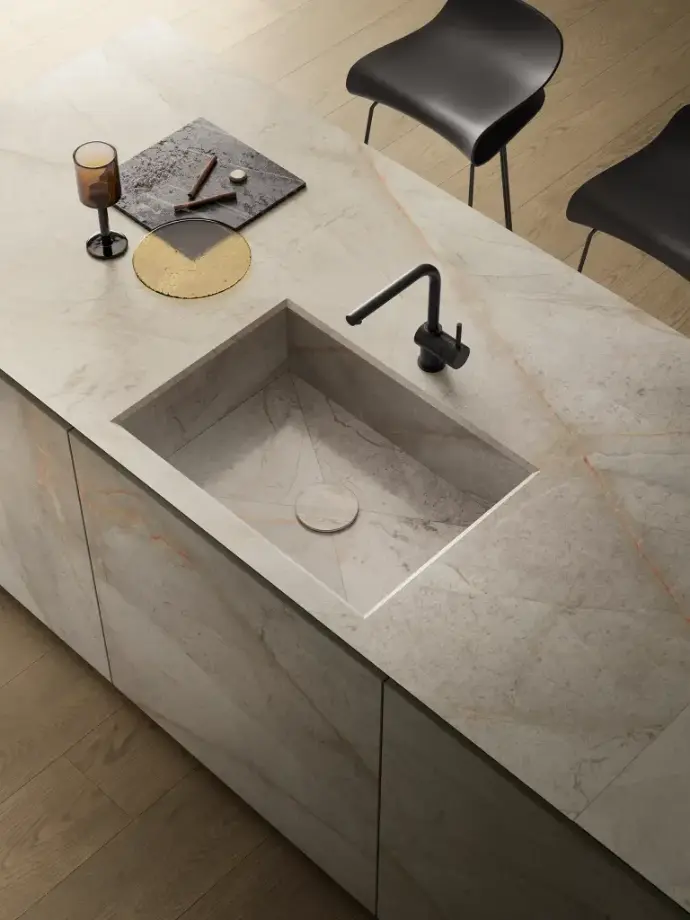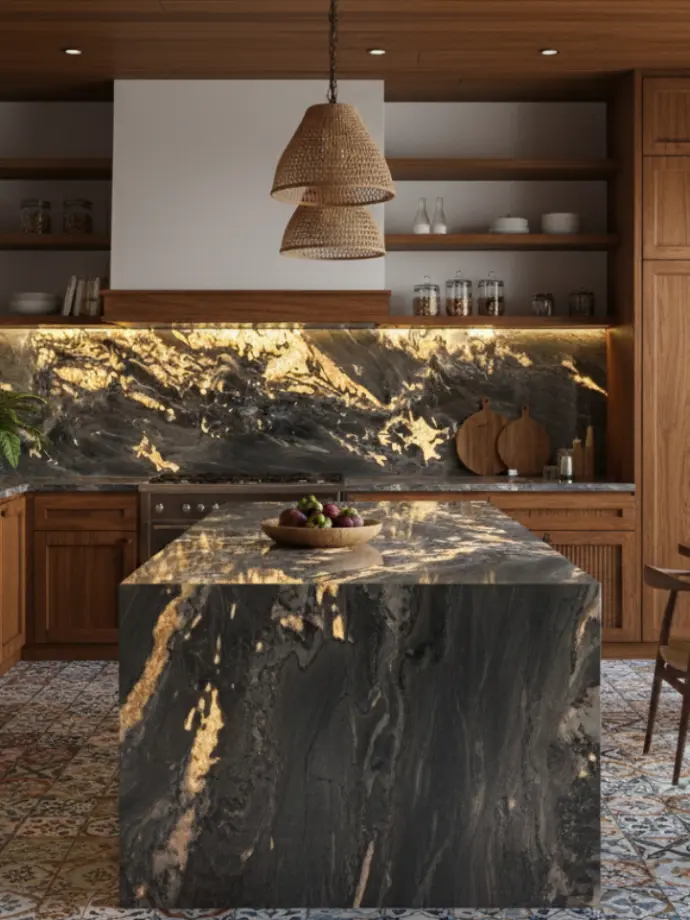What is Sintered Stone?
Sintered stone is an engineered surface material created by replicating the natural stone formation process under controlled conditions. Unlike quartz, which uses resins, sintered stone is made from 100% natural minerals, making it eco-friendly, non-porous, and highly durable.
How is Sintered Stone Made?
The durability of sintered stone comes from its advanced manufacturing process, which uses sintering technology—a method inspired by natural geological processes.
Step 1: Raw Material Selection
- A blend of quartz, feldspar, silica, and clay is carefully chosen for strength and aesthetics.
Step 2: High-Pressure Compaction
- The mixture is compressed under up to 400 bars of pressure, creating a dense, air-free structure.
Step 3: Extreme Heat Sintering
- The slab is heated to over 1,200°C, causing the minerals to bond at a molecular level—without resins or adhesives
The Manufacturing Process of Sintered Stone Creates Its Benefits
- Heat Resistant: Handles hot pots and pans without damage.
- Scratch Resistant: Harder than granite, perfect for high-traffic areas.
- UV Resistant: Colours stay vibrant even outdoors.
- Stain Resistant: Non-porous surface prevents liquid absorption.
- Eco-Friendly: Made from natural minerals and recyclable materials.
Applications of Sintered Stone
- Kitchen Countertops
- Bathroom Vanities
- Wall Cladding
- Flooring
- Outdoor Kitchens
- Furniture Design
- Facades
Final Thoughts
Sintered stone combines nature and technology to deliver a surface that’s beautiful, durable, and sustainable. If you’re looking for a premium material for your next project, sintered stone is the ultimate choice.
✅ Ready to upgrade your space? Contact us today for a free consultation and explore our premium sintered stone collection.

